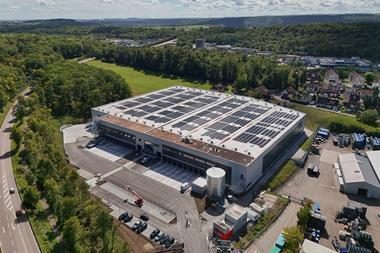Not all cities are equipped for migrant mobility and diversity, delegates at this year’s IPE Real Estate Conference & Awards in Amsterdam, heard.
Much urban growth is fast and unplanned, June Lee, from the International Organisation for Migration, told delegates.
Investors, she said, should look at cities where “opportunity structures” are set and in place for migrants to quickly integrate into community and society.
“Good human capital is coming your way,” Lee said in a Migrants and Cities: Increasing Human Mobility presentation.
As opportunity structures are put in place, the ability to take more migrants rises and there is no upper limit to how many migrants a city can take.
Large cities across the world are facing the same issues, Lee said, while secondary cities are less prepared.
Asian cities are experiencing significant migrant movement, she said, with movement between the world’s developing countries.
Lee said there are as many as one billion people – a seventh of the population – on the move within China.
“Those with global portfolios will need to look east.”
Population growth, she said, is likely to be created by migration.
“So it’s an important issue and one of the main drivers of economic growth,” Lee said.
With urbanisation and demographic trends driving global demand for housing, institutional investors are increasingly looking to enter the sector and both the Netherlands and the UK undergoing structural changes.
Moderating a subsequent panel on residential markets, Piet Eichholtz, professor of real estate finance, Maastricht University, asked: why the interest in the sector now?
Lisette van Doorn, chief executive of the Urban Land Institute, said there was a point where the residential sector looked like too much work and effort for investors, with management of multi-tenanted assets a dissuading factor.
Jaap van der Bijl, managing director investor relations Syntrus Achmea Real Estate & Finance, said a wider environment of low yielding investment options had turned the focus on the residential sector where there is a “mismatch between supply and demand”.
For PGGM, Guido Verhoef, head of private real estate, said residential assets provide stable income, low risk and diversification, while Dietrich Heidtmann, head of international capital markets at GTIS Partners, said he is “not sure it’s a new trend or just getting more attention now”.
In the US, attention has been “almost exclusively focused on multifamily”, Heidtmann said. However, single family has been completely ignored by institutional capital, he said.
Heidtmann said 82% of families live in a single family home. ”It’s a very attractive sector,” he said, pointing to the fact that of 16 million single family homes in the US, just 2% are held by institutional investors.
PGGM, said Verhoef, sees opportunity in the UK, where it recently teamed up with Legal & General for a £600m (€764m) joint venture.
The UK, he said, has some way to go to match its German equivalent. Working with local authorities could provide an opening he said.
Verhoef said he is pleased that the fund’s domestic Dutch residential market has now opened up to international investors.
The ULI, van Doorn said, feels the public and private sector need to work in partnership for cities to succeed and for demand to be fulfilled.
“There’s a lot to be done,” she said. “Cities need to have a vision and need the collaboration of public and private.
The public sector still has a role to play, she added. “They’ve really thought hard over the long term – you need a long term vision.”









